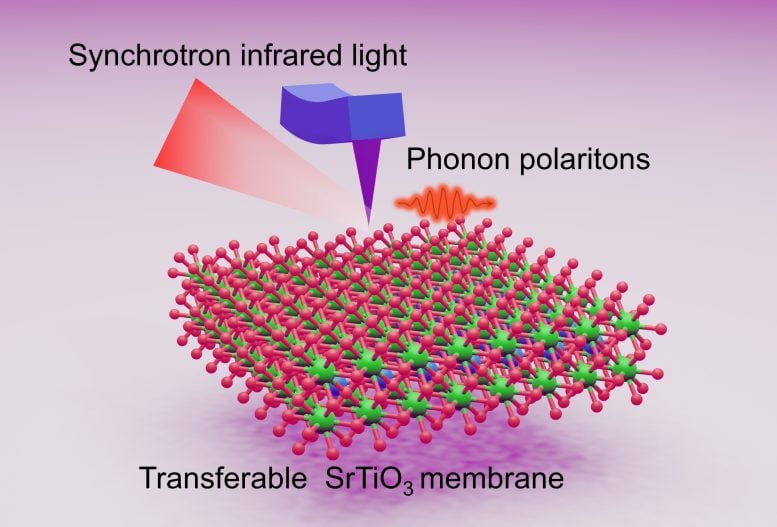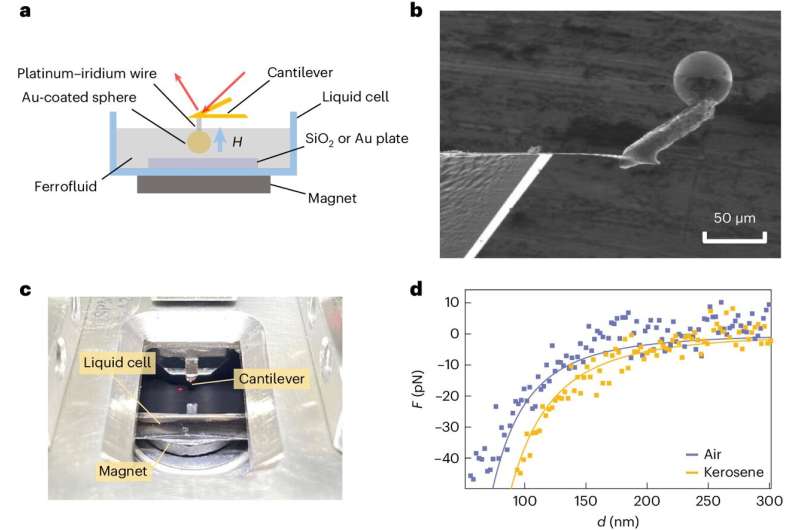

A scanning electron micrograph of a nanodevice that was measured to obtain the results presented in the paper. Credit: QuTech
Researchers at QuTech have found a way to make Majorana particles in a two-dimensional plane. This was achieved by creating devices that exploit the combined material properties of superconductors and semiconductors. The inherent flexibility of this new 2D platform should allow one to perform experiments with Majoranas that were previously unattainable. The results are published in Nature.
Quantum computers work completely differently from classical computers. While classical computers use bits as the basic unit of information, which can be either 0 or 1, quantum computers use qubits, which can exist in a state of 0, 1, or both simultaneously.
This principle of superposition, combined with new quantum algorithms, may allow quantum computers to solve some problems much more efficiently than classical computers. However, the qubits that store this quantum information are inherently more fragile than classical bits.
Majorana qubits are based on states of matter that are topologically protected. This means that small local perturbations cannot destroy the state of the qubit. This robustness to external influences makes Majorana qubits highly desirable for quantum computing, as the quantum information encoded in these states would remain stable for much longer times.
Producing a complete Majorana qubit requires several steps. The first of these is the ability to reliably engineer Majoranas and demonstrate that they indeed possess the special properties that make them promising candidates for the qubit.
Previously, researchers at QuTech – a collaboration between TU Delft and TNO – have used a one-dimensional nanowire to demonstrate a new approach to study Majoranas by creating a Kitaev chain. In this approach, a chain of semiconductor quantum dots are connected via superconductors to produce Majoranas.
Extending this result to two dimensions has several important implications. First author Bas ten Haaf explains, “By implementing the Kitaev chain in two dimensions, we show that the underlying physics is universal and platform-independent.”
His colleague and co-first author Qingzheng Wang adds: “Given the longstanding challenges with reproducibility in Majorana research, our results are really encouraging.”

Co-authors Bas ten Haaf and Qingzhen Wang demonstrate Majorana’s protection against a local disturbance. Attempting to push one of the Majoranas leaves her partner blissfully untouched. Credit: Studio Oostrum for QuTech
The ability to create Kitaev chains in two-dimensional systems opens several avenues for future Majorana research. Principal investigator Srijit Goswami explains, “I believe we are now in a position where we can do interesting physics with Majoranas in order to probe their fundamental properties. For example, we can increase the number of sites in the Kitaev chain and systematically study protection of Majorana particles.
“In the long term, the flexibility and scalability of the 2D platform should allow us to think of concrete strategies to create Majorana networks and integrate them with the necessary auxiliary elements for controlling and reading a Majorana qubit.”
More information:
Srijit Goswami, A Two-Site Kitaev Chain in a Two-Dimensional Electron Gas, Nature (2024). DOI: 10.1038/s41586-024-07434-9. www.nature.com/articles/s41586-024-07434-9
citation: A Route to Scalable Majorana Qubits (2024, June 12) Retrieved June 13, 2024 from https://phys.org/news/2024-06-route-scalable-majorana-qubits.html
This document is subject to copyright. Except for any fair agreement for study or private research purposes, no part may be reproduced without written permission. The content is provided for informational purposes only.
#route #scaled #Majorana #qubits
Image Source : phys.org




